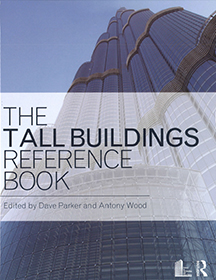Contribution
The Tall Buildings Reference Book
Chapter 12: Sustainability and Energy Considerations
Chapter Introduction
In the last year humanity crossed into a new experience, we became an urban species. More people live in cities than the countryside. In the next three decades it is expected that 70% of the world’s population will live in cities. As urban dwellers, we typically use less energy and resources per capita than in more spread out settings. At low densities cities sprawl across the landscape, consuming farmland, habitat water, energy and materials. In higher densities, individual dwelling units tend to be smaller, and amenities are shared by more people, thus lowering the overall amount of construction materials to house a similar population. Tall buildings are essential for the new cities of the world to be sustainable.
How is a tall building more sustainable, when for example a well-designed low-rise suburban office building may use the same energy per square meter as a skyscraper? There can be some differences due to access to daylight and the surface area-to-volume ratio, more on those a little later. The main difference is in context, tall buildings are usually located in areas served by pedestrian access and public transportation so not entirely reliant on private cars as the mode of access. For example, rather than the energy use of individual cars a New York subway train gets the equivalent of 540 passenger miles to the gallon (TK passenger kilometres per liter). Tall buildings tend to be integrated into tighter more efficient utility infrastructures, and can some times rely on district heating and cooling systems that are not economically feasible at lower densities.
What makes for sustainable tall building? Several issues are important; energy, water, materials, waste, and most importantly occupant health.
Topics
- Energy
- Water
- Material and Waste Resource Efficiency
- Well-Being
- The Challenge Ahead
Book Editors
Dave Parker
Antony Wood
Chapter Authors
Rick Cook
Founding Partner, Terrapin Bright Green
Partner, COOKFOX Architects
Bill Browning
Founding Partner, Terrapin Bright Green
Chris Garvin
Managing Partner, Terrapin Bright Green

